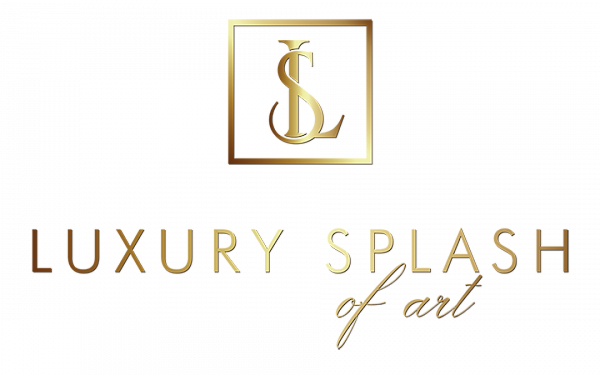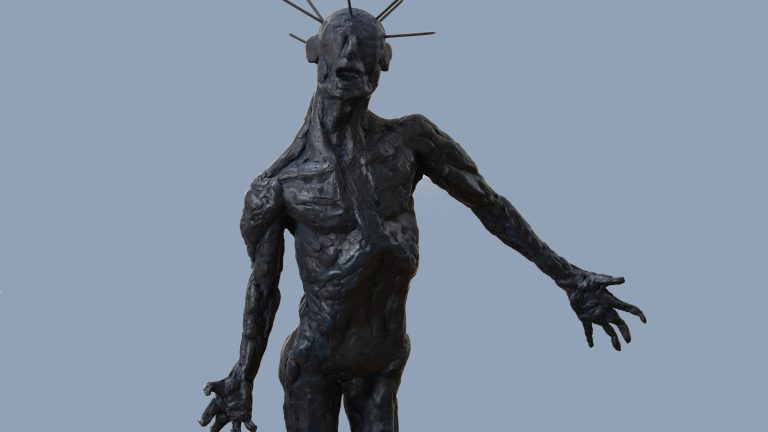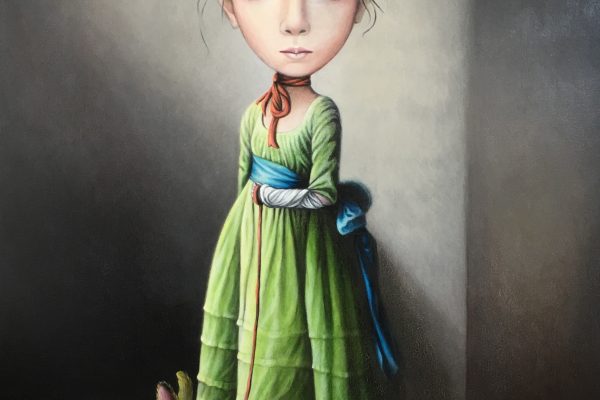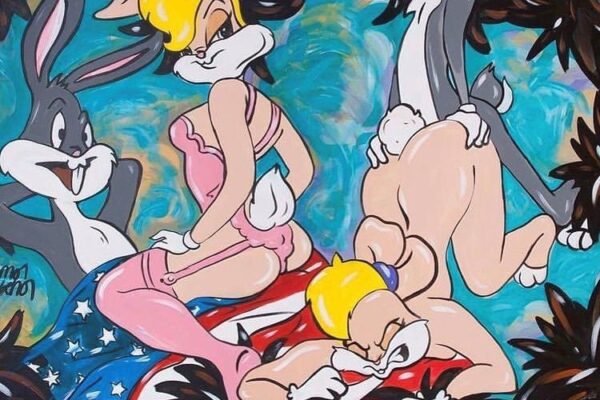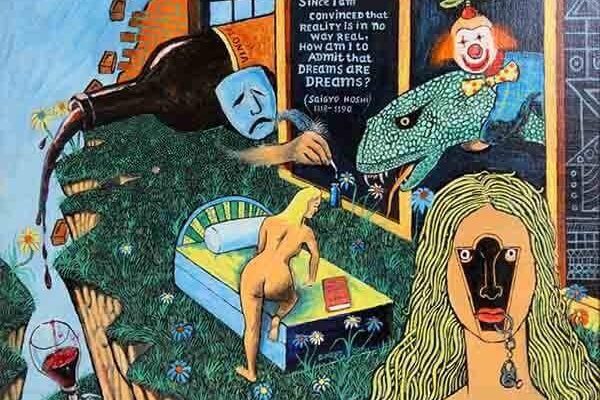Dr Gindi is one of Switzerland’s foremost sculptors. Known for her bronzes that often feel chimerical yet seem eerie at times, Dr Gindi, in her search for the infinite, is seeking to render the real conjectural and the conjectural real. Her work powerfully registers the phenomenological states of being and becoming in which we are suspended. In this article, she shares her reflections on infinity from a very personal perspective.
A bare emaciated figure emerges from an underground cell with arms outstretched at sides, fingers splayed, head tilted upward, mouth agape. His skull pierced with rods, invoking the needles of acupuncture or the invisible rays that interconnect with the universe, radiates energy but also suggests the scars of suffering. Rising up from a constrained subterranean existence, the man exudes both affliction and exaltation in every fiber of his being. This bronze sculpture Materializing, as its title indicates, gives bodily form to the immaterial invisible aspects of existence while capturing the ongoing flux characterizing all life. The work is emblematic of the fluidity of being, a core concern of my practice, which celebrates continuity in transformation. Representing the fluctuating energy becoming matter central to quantum physics, the figure is undergoing a process akin to birth.
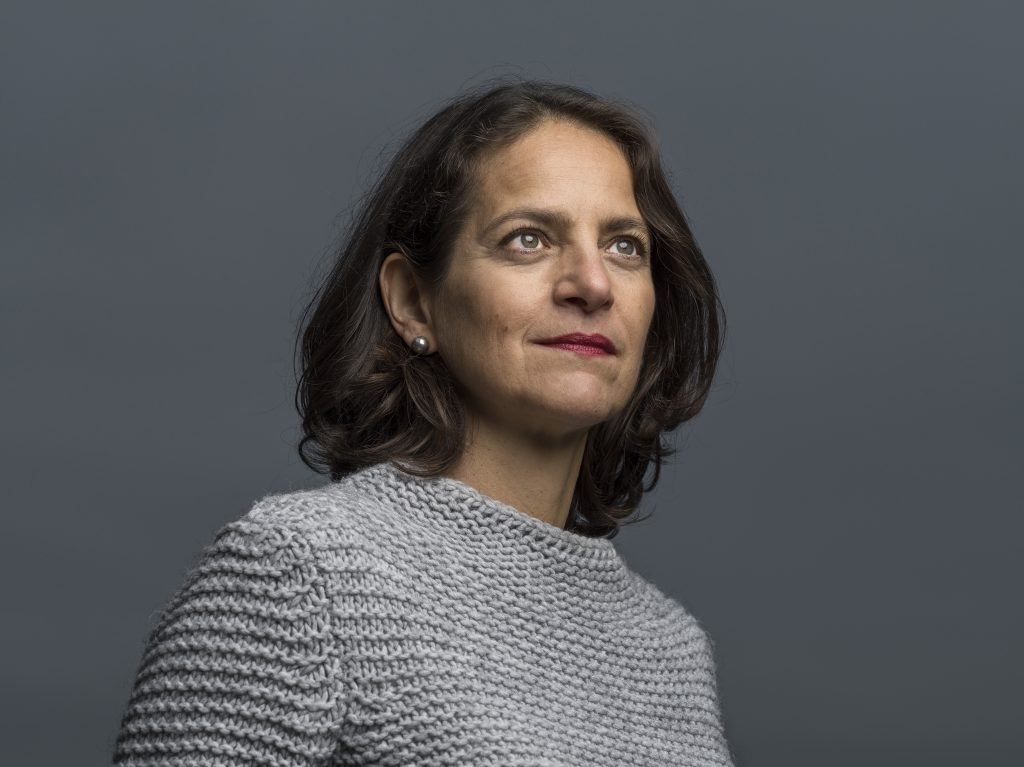
Dr Gindi image by braschler/fischer
Glimpses of related themes appear in myriad guises in the history of art, especially in the broad period encompassing modernism. In his evocative etching L’Œil, comme un ballon bizarre se dirige vers l’infini (The Eye like a Strange Balloon Mounts toward Infinity), French Symbolist artist Odilon Redon inventively plays with the formal aspects of shape and scale, collapsing vision and the exploration of the universe in his fantastical landscape. The disembodied orb of the eye, with iris and pupil straining upward, stands in for the hot air balloon—a scientific advance that by the late-nineteenth century had become a common public spectacle—which lifts a severed head toward the infinite, a striking and unsettling image that conjures demise and its transcendence through flights of the imagination. Throughout the twentieth century and to this day, visions of the human in relation to the natural world and science or technology have been pervasive in the arts. At the outset of their careers, American artists Robert Rauschenberg and Susan Weil, his wife at the time, experimented with the cyanotype, an early photographic process that captures a negative imprint of objects blocking exposure to light on the “blueprint” paper. In a series from around 1950, the artists’ silhouettes or body parts intermingle with plant life. These ghostly apparitions float against a deep blue ground suggesting the ethereal infinite space of both sky and sea. Here the photographic medium operates a reversal of void and volume in which space materializes through color and matter is rendered immaterial, with objects appearing as pure light.

Often viewed as oppositions in Cartesian thought, art and science, body and mind, fixity and flux, material and immaterial, and so on, intermingle and complement each other, inextricably entangled. The fluidity of being, which encapsulates my approach to sculpture, is indebted to the theories of quantum physics, which have inflected the arts for over a century. Trained as an architect, Chilean painter Roberto Matta drew inspiration from popular science publications, blending concepts and imagery from scientific discoveries such as Einstein’s Theory of Relativity with observations of natural phenomena to create otherworldly scenes he called “inscapes” or psychological morphologies. In The Onyx of Electra (1944), for instance, Matta attempts to represent the time/space continuum, shattering pictorial spatial conventions in a composition with morphing lines and multiplying planes that create a kind of four dimensional labyrinth defying any sense of fixity.

Exiled Spanish painter Remedios Varo metaphorically conveyed her interest in Einstein’s theories in works such as Phenómeno (Phenomenon, 1962), thereby drawing parallels between the creative impulse common to both science and art. While alluding to the most recent scientific discoveries, she also aligned the artistic process with the ancient practice of alchemy, signaling how both artist and alchemist participate in an act of transformation. The interrelatedness of terrestrial and celestial domains is central to La Llamada (The Call, 1961), in which a glowing female figure holding alchemical tools emerges from the archway of a kind of fortress that paradoxically protects and imprisons its inhabitants. Unlike the other effigies, which remain petrified like sculptural reliefs with closed eyes, she has awakened from a dormant state, surrounded by an aura connecting her to the cosmos through the undulating tresses of her fiery red hair.

Breaking free from a similarly confining state of being, the figure in Materializing is experiencing a process of transformation, echoes of which can be perceived in other artworks including these few distinct examples. Informed by the notions of simultaneity and constant flux, this sculpture embodies the self grappling with the contradictions, the fractures, the invisible forces at work in our world of infinite dimensions. I invite the viewer to contemplate our common existence, our interconnectedness with the fundamental structure of the universe, and in so doing to embrace complexity, to open their minds to possibility, to imaginative potential, to materializing infinity.
Written By Dr Gindi
https://www.instagram.com/gindisculptor
